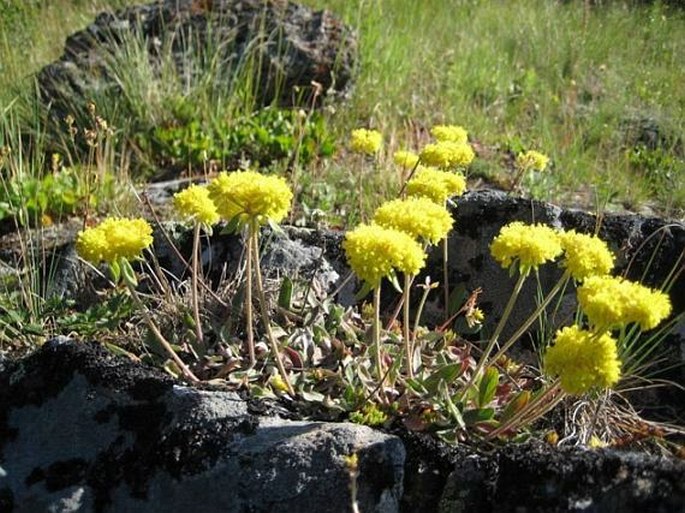Syn.: Eriogonum aureum Nutt. ex Benth., Eriogonum crassifolium Benth., Eriogonum lateriflorum Raf., Eriogonum polyphyllum Small ex Rydb., Eriogonum sericeum Pursh
Family: Polygonaceae Juss.

Distribution: North western part of North America from Alaska and Yukon to western provinces of Canada and in US, in Washington, Oregon, Idaho, Montana, Dakotas, Nebraska, Wyoming and Colorado. 3 varieties are recognized.
Ecology: Dry grasslands, gravelly and rocky slopes, rock outcrops and scree, from 700–2500 m of elevation.

Description: Perennial herb to subshrub, flowering stem 10–30 cm tall, pubescent or smooth, from a woody rootstock, many-branched, forming cushions. Leaves basal, leathery, oblong to lanceolate, 2–5 × 1–3 cm, long petiolate, green above, white-woolly below, whorl of leaf-like bracts below flower cluster. Inflorescence is an umbel, 2–10 cm across; flowers bright yellow, often tinged with pink or red, 4–5 mm long, 6 petal-like sepals, 9 long-filament stamens, 1 pistil. Fruit is a triangular achene, 4 mm long, with woolly hairs.
Use: Plains tribes used mashed roots as ear plugs and flowers as additive for treating bison hides.
Note: This genus is one of more common ones in North America, as there are over 250 species found on the continent. Taxonomically quite difficult, however majority of the species have very limited range and can be considered endemic.


These images were taken in Canada, Alberta, Kananaskis (summer 2012), Calgary, Confluence Park (summer 2013).


